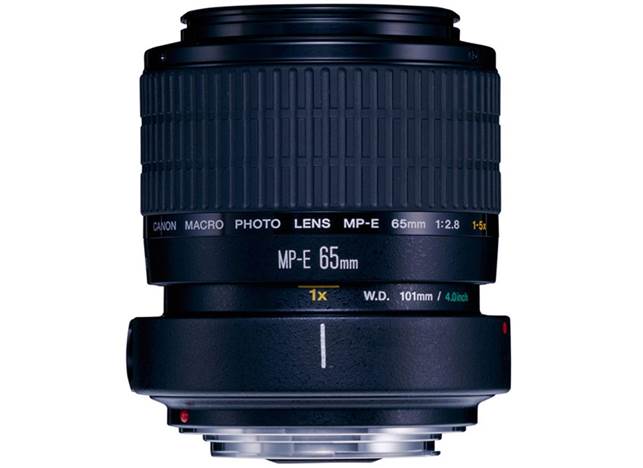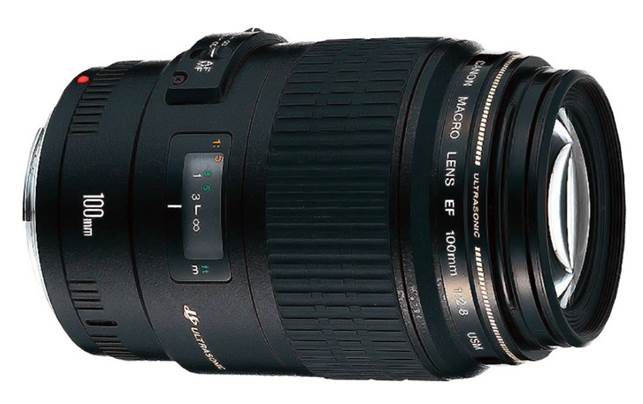Macro lenses are often called ‘close-up’ lenses, as
that’s what they do best. But there are still choices to be made
When you’re choosing a macro lens it’s important to consider
the 1.6x crop factor of most Canon D-SLRs – a focal length of 100mm is a
long-standing favourite for macro lenses, but one that stems from full-frame
film cameras. Canon’s EF-S 60mm is designed specifically for cameras with smaller
APS-C sensors – the effective focal length works out to 96mm, which is almost
exactly the same as the classic 100mm length. The same goes for the Tamron 60mm
Di-II macro lens that’s also incompatible with full-frame cameras, as is the
Tokina 35mm DX macro.
At the other end of the scale, some macro lenses, such as the
Canon and Tamron 180mm models, offer a long telephoto reach of 288mm on APS-C
cameras, once you’ve taken the crop factor into account. So which focal length
is best? A relatively short focal length of 35mm means a macro lens can
potentially double up as a standard prime lens; slightly longer 50-60mm lenses,
on the other hand, are best for portraiture.

A portrait shot
with Canon 100mm f2.8L Macro IS USM Lens
Getting back to macro shooting, 50-60mm is ideal on an APS-C
camera for small inanimate objects; longer lenses of 100-180mm are great for
photographing moving subjects such as bugs, as there’s less chance of scaring
them away – you can keep more distance between you and the insect, while still
getting extreme close-up shots. It’s also tempting to consider using a long
macro lens as a telephoto for sports and wildlife photography, but this is less
than ideal, because the low gearing and long travel of the focus range often
results in slow autofocus performance. Some lenses feature a focus limit switch
but, even so, autofocus can still be sluggish.
Canon MP-E 65mm f/2.8 1-5x Macro
This high-cost option truly is a specialist close-up lens
and, in fact, can’t be used for anything else. It takes up where most macro
lenses finish off, with a magnification range starting at 1.0x and rising all the
way to 5.0x. The good news is that this enables immense magnifying power; the
downside being that you can’t focus on anything further away than 24cm. On this
there’s no autofocus mechanism, and the manual focus ring works more like a
magnifying ring. Magnification factors are marked on the inner lens barrel,
which extends as the magnification increases. When focused, the front of the
lens moves from 101mm to just 41mm away from the target, as you increase
magnification through the available range.

Canon MP-E 65mm
f/2.8 1-5x Macro
The easiest way to use the lens is to set the approximate
magnification you require, then move the camera backwards and forwards until
focus is achieved and finally adjust the focus/magnification ring for precise
focusing. Lighting can be tricky at higher magnifications because the lens
extends to 23cm long and, with its front edge only 41mm from the target, light
from a regular flashgun is obscured. These difficulties aside, optical and build
quality are both excellent.
|
Verdict
·
Price: $1,050 ·
For: Reveals levels of detail that are invisible to the naked
eye ·
Against: Only for extreme magnification, requires specialist
lighting
|
Canon EF 100mm f/2.8 Macro USM
Nearly twice the size and weight of the Canon EF-S 60mm
Macro on test, this is the equivalent lens for full-frame cameras, although
it’s equally suitable for use on APS-C bodies. Indeed, one advantage is that
you don’t get as much vignetting on cameras with smaller sensors when shooting
at the maximum aperture of f/2.8.
Like the EF-S 60mm, this has internal focusing with
ring-type USM autofocus, with full-time manual override. Autofocus speed in the
EF 100mm is a little slower (probably why Canon has fitted a focus limit
switch). Frustratingly, the switch merely limits the focus range to between
48cm and infinity, rather than the full range of 31cm to infinity, so you can’t
lock focusing to just the short end of the range for macro work.

Canon EF 100mm
f/2.8 Macro USM
Optically, the EF 100mm proved extremely sharp at its
maximum aperture, and maintained excellent performance through to f/16. At f/22
there was an obvious fall-off in sharpness, but this only really set in at the
smallest aperture of f/32. This is a common phenomenon, due to diffraction of
light at very small apertures.
Overall, the EF 100mm is a great performing lens, even if it
does lack the image stabilisation refinement of Canon’s 100mm L-series macro.
|
Verdict
·
Price: $600 ·
For: Superb optical quality, internal focusing and USM autofocus ·
Against: Focus limit switch can’t lock focus range to the short
end
|